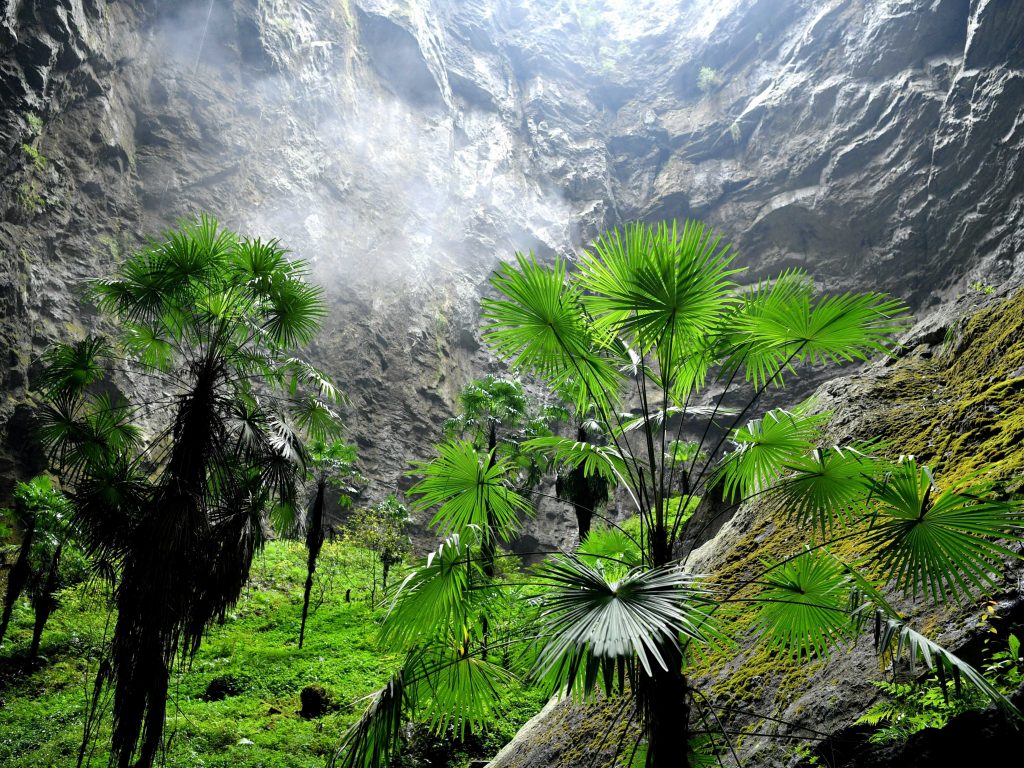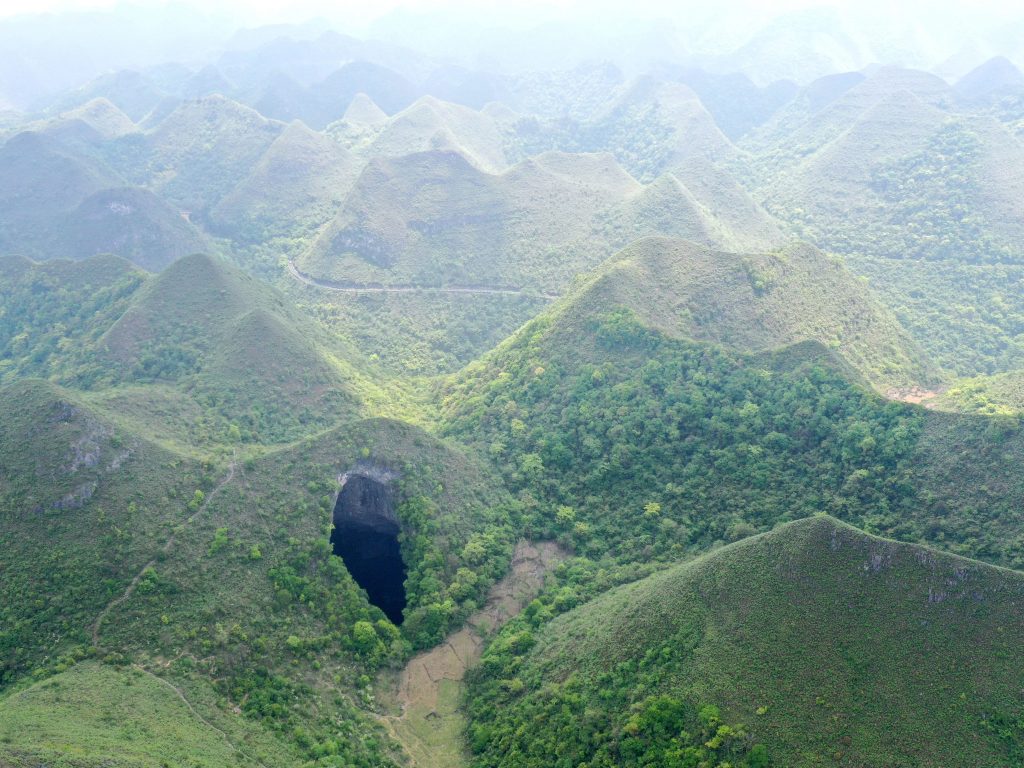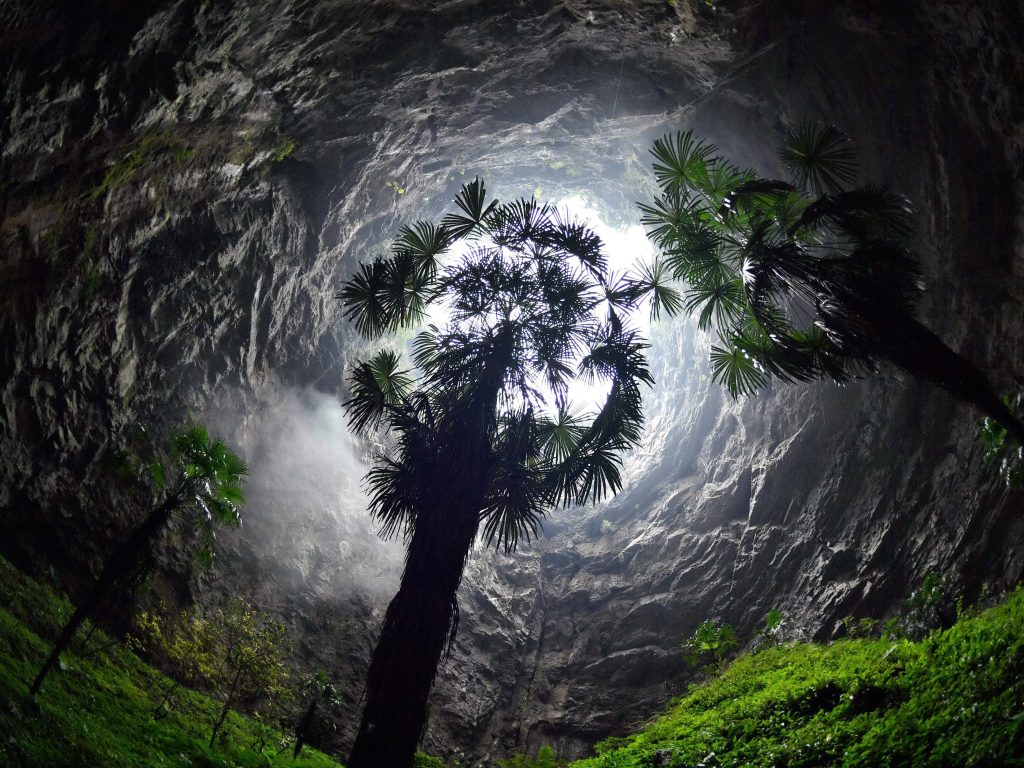- Cave explorers found a giant sinkhole in China's Guangxi region, per Xinhua News Agency.
- Hidden inside the 630-feet-deep sinkhole is an ancient forest.
- Sinkholes are common in the region because the land sits on easily-dissolved bedrock.
Cave explorers found a massive ancient forest hidden inside a giant sinkhole in China's Guangxi region, Xinhua News reported.
The sinkhole measured over a thousand feet in length and was almost 630 feet deep, Zhang Yuanhai, a senior engineer with the Institute of Karst Geology at the Chinese Academy of Geological Sciences, told the outlet earlier this month.
The explorers rappelled down more than 328-feet into the sinkhole before trekking for several hours to reach the bottom. On the sinkhole floor, they found a primeval forest with ancient trees 130 feet tall, expedition team leader Chen Lixin told Xinhua. He added that the plants grew densely together and came up to his shoulders.

A Twitter video dated May 7 showed expedition team members climbing through the dense foliage and operating a drone to document the sinkhole.
—CGTN (@CGTNOfficial) May 11, 2022
Such sinkholes might be home to undiscovered species of flora and fauna, researchers told AccuWeather.
"I wouldn't be surprised to know that there are species found in these caves that have never been reported or described by science until now," George Veni, the executive director of the National Cave and Karst Research Institute in New Mexico, told the outlet on Wednesday.

Known as tiankeng in Mandarin, or "heavenly pit," sinkholes are common in South China due to the nature of the landscape. The landscape, called karst, is formed when rainwater dissolves bedrock, Veni told Live Science.
"Because of local differences in geology, climate, and other factors, the way karst appears at the surface can be dramatically different," he told the outlet. "So in China, you have this incredibly visually spectacular karst with enormous sinkholes and giant cave entrances and so forth. In other parts of the world, you walk out on the karst, and you really don't notice anything. Sinkholes might be quite subdued, only a meter or two in diameter. Cave entrances might be very small, so you have to squeeze your way into them."
The region was added to the UNESCO World Heritage list in 2007 due to its unique topography, which includes rock formations and extensive cave systems.
China is also home to the world's largest sinkhole — the Xiaozhai Tiankeng — measuring over 2,000 feet in depth. It can be found in Tiankeng Difeng National Park in Chongqing City.
Dit artikel is oorspronkelijk verschenen op z24.nl
